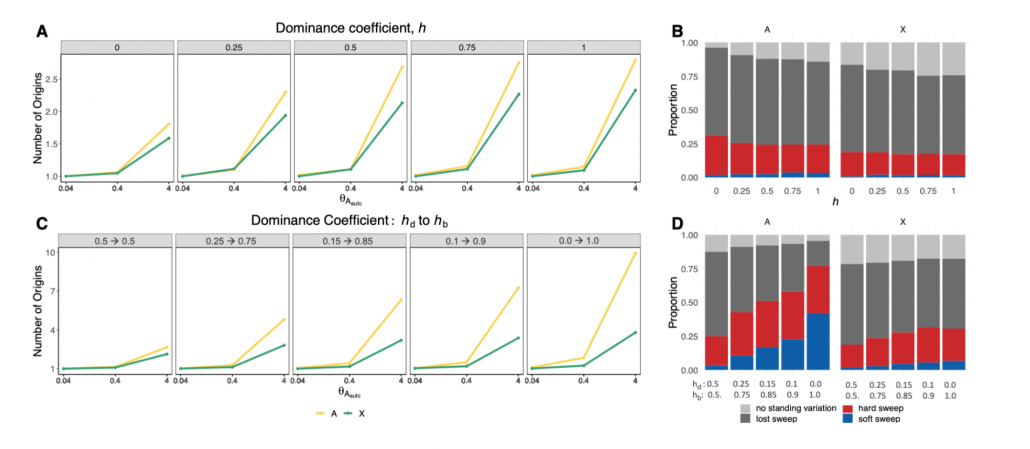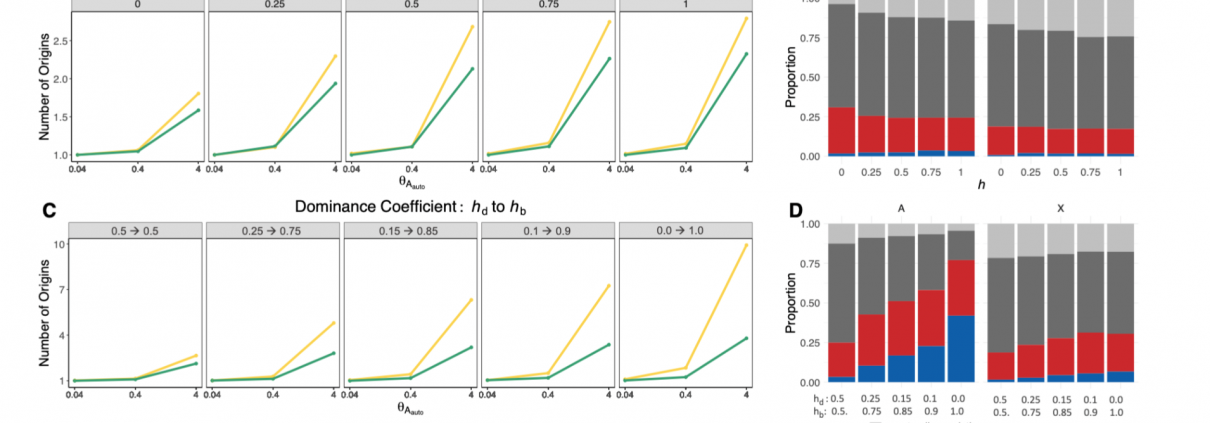Enrichment of hard sweeps on the X chromosome of Drosophila melanogaster
Recently Mariana Harris and Nandita Garud posted a preprint on hard and soft sweeps on the X versus autosome of D. melanogaster!
Here is the abstract!
The characteristic properties of the X chromosome, such as male hemizygosity and its unique inheritance pattern, expose it to natural selection in a way that can be different from the autosomes. Here, we investigate the differences in the tempo and mode of adaptation on the X chromosome and autosomes in a population of Drosophila melanogaster. Specifically, we test the hypothesis that due to hemizygosity and a lower effective population size on the X, the relative proportion of hard sweeps, which are expected when adaptation is gradual, compared to soft sweeps, which are expected when adaptation is rapid, is greater on the X than on the autosomes. We quantify the incidence of hard versus soft sweeps in North American D. melanogaster population genomic data with haplotype homozygosity statistics and find an enrichment of the proportion of hard versus soft sweeps on the X chromosome compared to the autosomes, confirming predictions we make from simulations. Understanding these differences may enable a deeper understanding of how important phenotypes arise as well as the impact of fundamental evolutionary parameters on adaptation, such as dominance, sex-specific selection, and sex-biased demography.
Please check out our work and let us know what you think!

Simulations suggest that sweeps on the X on average should be harder than on autosomes (Figure 2 of Harris and Garud, 2022)



